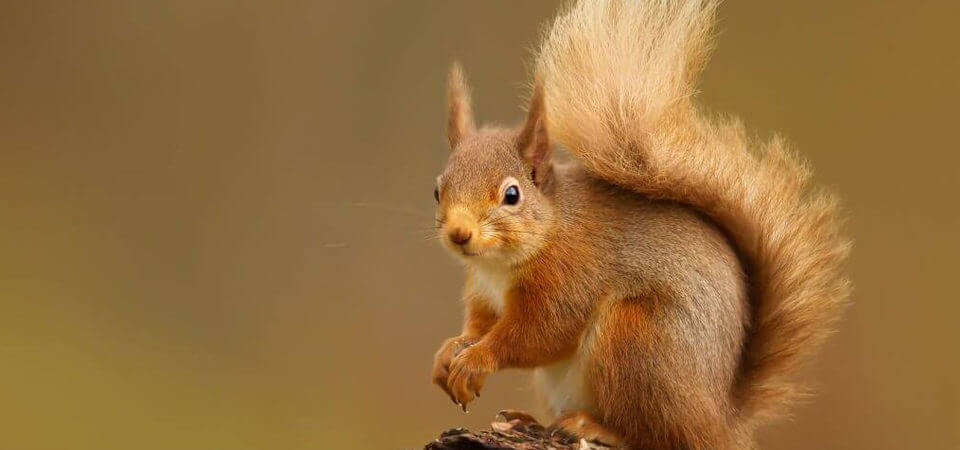The Return of the Red Squirrel
Posted on February 7, 2019 | InformationIf you’ve ever been enchanted by Beatrix Potter’s stories, you’ll doubtless be familiar with the exploits of naughty Squirrel Nutkin. It’s equally likely though that you’ve probably never seen one in real life, as red squirrel colonies in the UK have declined sharply since the introduction of the grey squirrel to these shores in the 1870s.
At the turn of the twentieth century when Potter was passing her summers at Lingholm, writing and sketching the wildlife, Nutkin and friends would have been part of the living landscape. At that time, red squirrels numbered in their millions; today, it’s thought that the population is closer to 150,000, with estimates in England as low as 15,000.
Now classed as ‘Near Threatened’ in every UK nation excepting Scotland, the red squirrel population has lost out to its grey cousin partly because of competition over food, the regression of the woodland habitat and a disease carried by the grey squirrel (parapoxvirus) that has little effect on its host, although it is often fatal in reds.
Thankfully, Cumbria is one of the few places in England that has seen a gradual return of these elusive creatures. You’ll need to be observant and you’ll only have a chance of spotting them in woodland areas. Reds are much smaller than greys and are recognisable by their russet colour, long ear tufts and long fluffy tails. You could also keep an eye out for signs of red squirrel habitation – scratches on tree bark and partly chewed pine cones, for instance.
Where can you see red squirrels?
The National Trust has supports local squirrel groups and even has squirrel rangers to look out for the resident population! At Aira Force (Ullswater) you can watch squirrel feeders from the wildlife hide, while at Allan Bank (Grasmere) you can spot squirrels from the study using binoculars provided. If you wander along the garden path, you may catch sight of one as you go.
At Russell Armer’s aptly named Squirrel Close development in Yanwath, our own build team often spot red squirrels and have installed a feeder to encourage them to linger. Just 13 miles distant, Greystoke Forest in Penrith offers a selection of walks through that should give you the opportunity to enjoy a bit of red squirrel spotting in the wild. You’ll have the best chance of seeing one among the Scots pine and larch plantations.
In Keswick, head for the Forestry Commission’s Whinlatter Forest Park where feeders attract squirrels along a trail from the visitor centre. Above Bassenthwaite, Dodd Wood is also populated by red squirrels that can be seen on the feeders just below the osprey viewing platform.
Prime spotting times are morning and late afternoon when the red squirrels are most active.
Get involved!
A total of 14 red squirrel groups operate in Cumbria – all made up of volunteers who are dedicated to conserving the country’s red squirrel population, covering most of the county – these are made up entirely of volunteers. New support is always welcome – get in touch with your nearest group to find out more.

